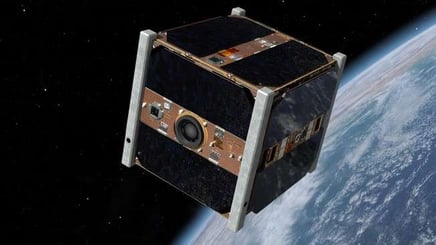Welcome to the new world of CubeSat Manufacturers! These small satellites are becoming more and more popular in today’s new space industry. Their increasing popularity is mostly because of their small, lightweight, and inexpensive designs. The standard 1U Cube Satellite is 10cm x 10cm x 10cm in size. However, since their inception in 1999, new Cube Satellite companies have developed more variations in size to meet desired payload levels. A 1.5U, 2U, 3U, 6U, 8U, 12U etc. are now offered to meet customer's growing specifications.
Rob Rutkowski
Recent Posts
19 Popular Cube Satellite Companies in Today's Market
Topics: Space & Satellites
6 Emerging PNT Technologies & Solutions of the Future
The U.S Department of Homeland Security considers 13 of the nation’s 16 critical infrastructure sectors to be ‘critically dependent’ on PNT technology. Also, a loss of PNT would cost the U.S an estimated $10 BILLION a day. Not only do many everyday consumers use PNT & GPS on a daily basis, it's also crucial for military and intelligence operations. Other industries that strongly rely on GPS based PNT include
- Radio communications
- Network synchronization
- Intelligence systems
- Information gathering
- Cruise missiles
- Weapons systems
- Electronic warfare
Topics: Space & Satellites, GPS & GNSS, Military & Defense, Defense & PNT
Is a Swept Quartz Crystal Necessary in your Timing Application?
What is a Swept Quartz Crystal?
Like many other things, radiation can impact a crystal oscillator's frequency. This is because radiation physically alters the quartz crystal inside the oscillator (changes position of weakly bound compensators that change the elastic constants of quartz). In some cases, radiation can even impact the crystal series resonance. The increase of resonance can be serious enough to cause the oscillator to stop oscillating if the crystal isn't radiation resistant. When a quartz crystal is manufactured to be radiation resistant, the crystal is referred to as a swept quartz crystal.
Topics: crystal oscillators, RF Technology
Is it too early to start thinking about holiday gifts? Absolutely not! The holiday season is approaching quickly, so we wanted to help you start thinking through some great gift ideas for the engineers in your life (or soon to be). We also wanted to make this your not-so-average gift idea post that doesn't include your typical (boring) engineering mug or neck-tie gifts. Without further ado, here's 10 unique holiday gifts for engineers.
Topics: General Topics, Engineering Equiptment
What The Heck is an OCXO Oscillator? (Facts & Functionality)
Ahh the mysterious OCXO. What the heck is an OCXO anyway? What's it good for? When should you use one in your electronic system design? These questions and more will all be answered in this post.
Topics: crystal oscillators, Clocks & Crystals
6 Innovative Markets Where Precise Timing & Sync Will Be Crucial
Precise timing across a variety of networks and industries is becoming a necessity. Both operationally and legally. It's actually pretty amazing to see the evolution of timing & frequency control throughout different industries. There's been significant timing innovations over the past 5-10 years alone.
Topics: Clocks & Crystals, RF Technology
What is a DoD Modular Open Systems Approach (MOSA)? (5 Core Principles)
A Modular Open Systems Approach (MOSA) is becoming critical in Department of Defense (DoD) systems. If you're unfamiliar with this critical system design approach (or need a little brush-up) you're in the right place (and should totally keep on reading to discover the 5 core principles).
But first, a few quick basics. MOSA is a business and technical strategy for easily developing new defense systems or modernizing existing ones. This will help the Department of Defense provide joint combat capabilities required for 21st century warfare.
MOSA also provides the ability to support and evolve these 21st century capabilities over their total life-cycle.
Topics: Military & Defense
The development of crystal oscillators has literally changed the world. Technically that can (and is) said about many things. But think about it! Without crystal oscillators, we may have never seen precision timing in clocks, wide and clear radio broadcasts, or important communication methods within military and space programs.
Imagine how different our world might be without these now commonplace technologies.
Topics: crystal oscillators
The fall and Halloween season is among us once again. (Finally!)
So yes, we're about to take on the challenge of linking frequency control to Halloween. Can it be done? Maybe. Will it be done? Yes. (We never let the word 'impossible' stop us in the past).
In this post you're going to discover the dark, creepy side of frequency control by looking at some scary frequency sounds that can be found within our universe.
Topics: Space & Satellites

When it comes to stratum levels and minimum performance requirements for digital network synchronization, there's definitely a lot to know. A standard first released in 1987 entitled "Synchronization Interface Standards for Digital Networks" from the American National Standards Institute (ANSI) lays out all the official information and requirements.
Topics: RF Technology














